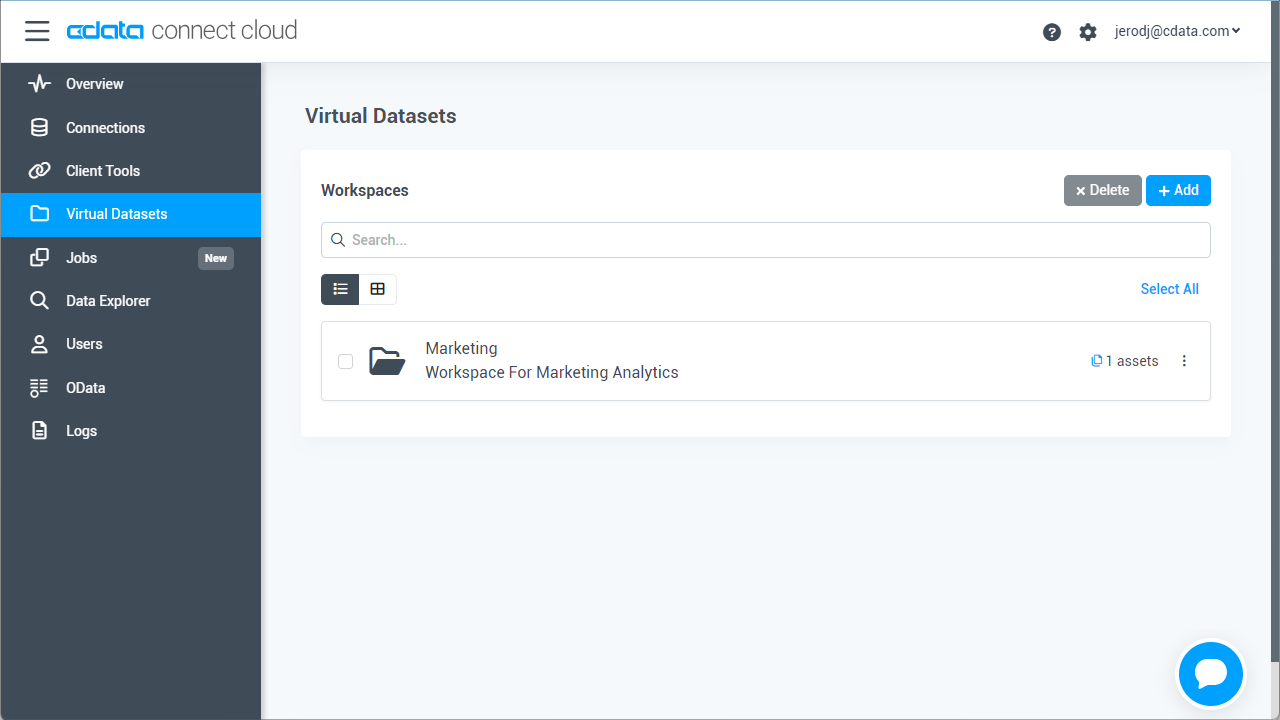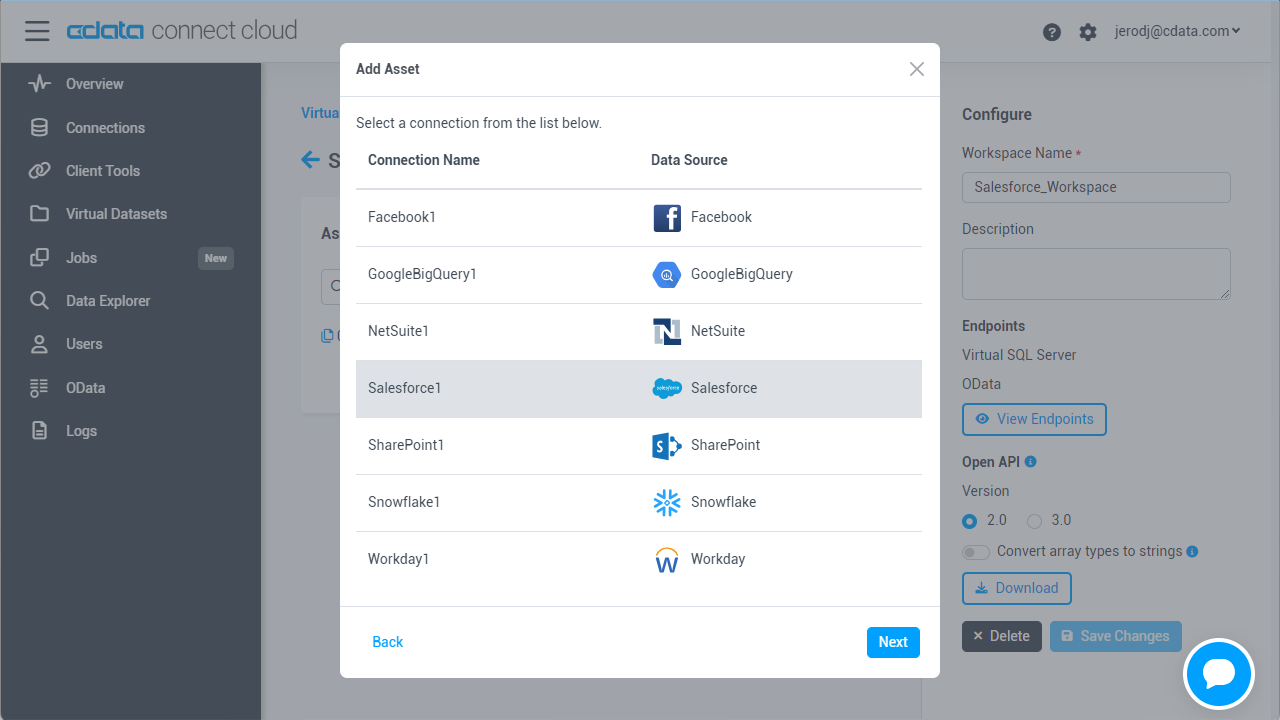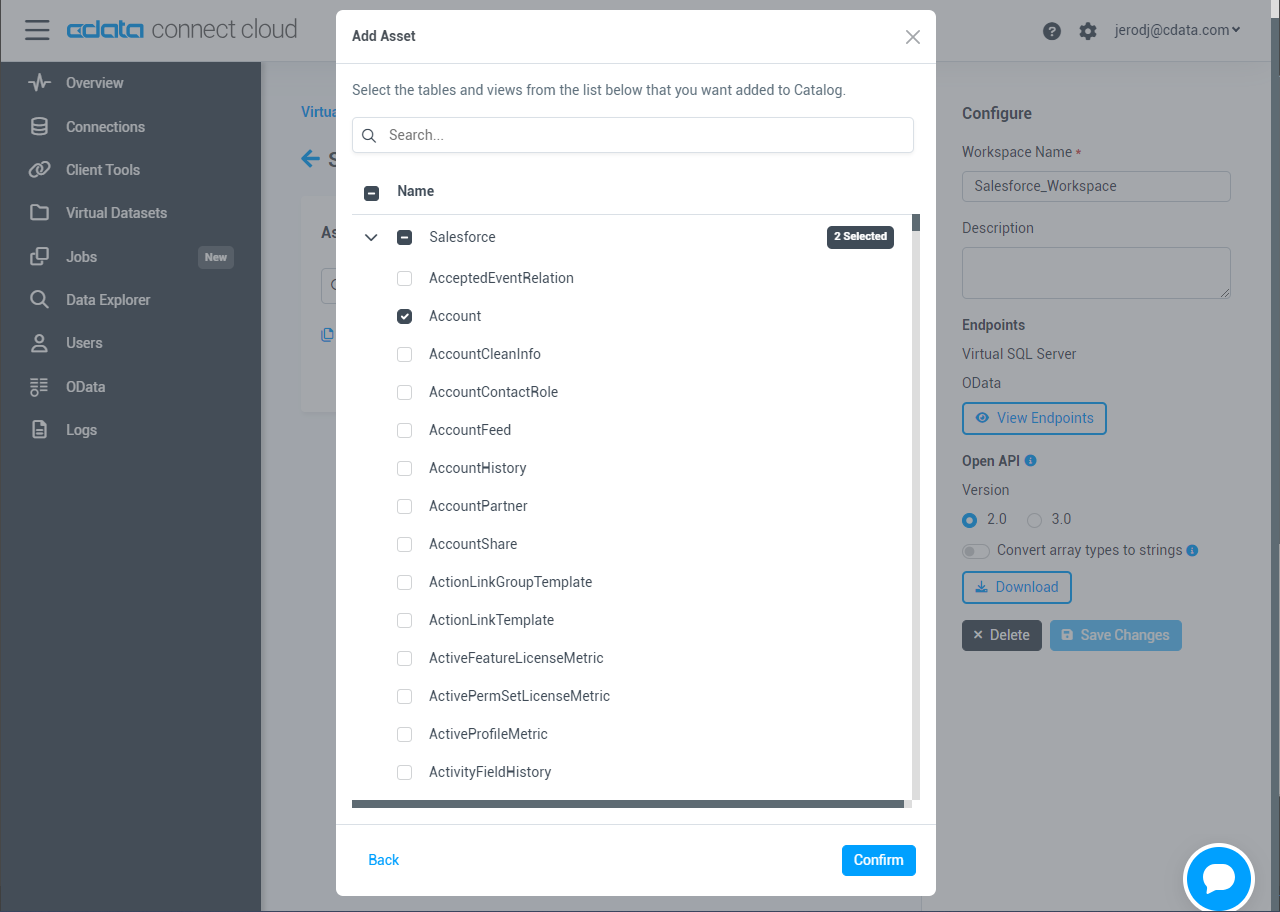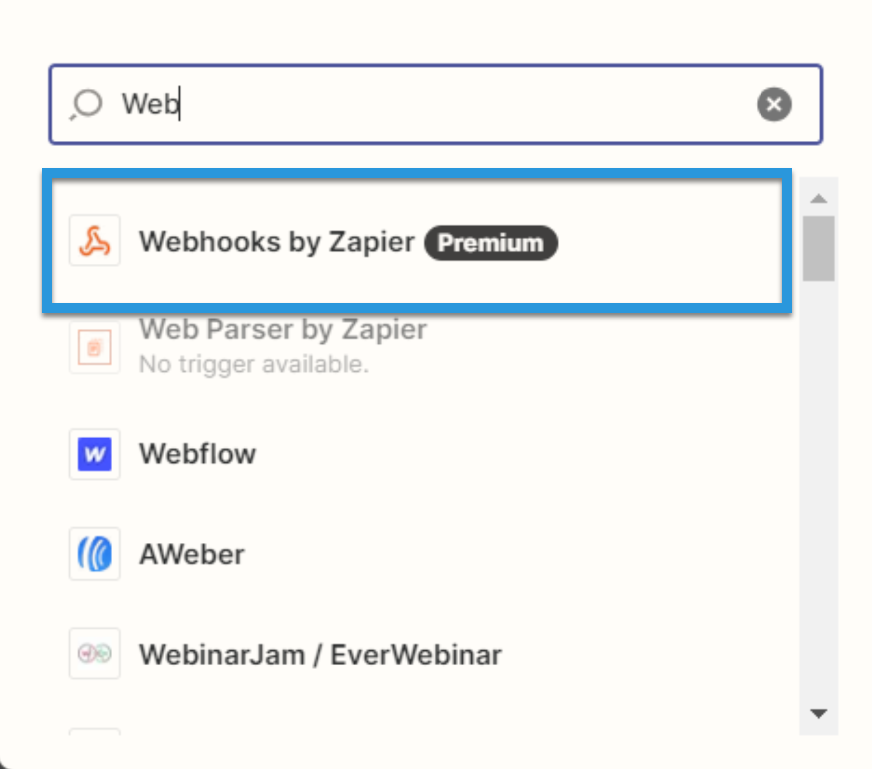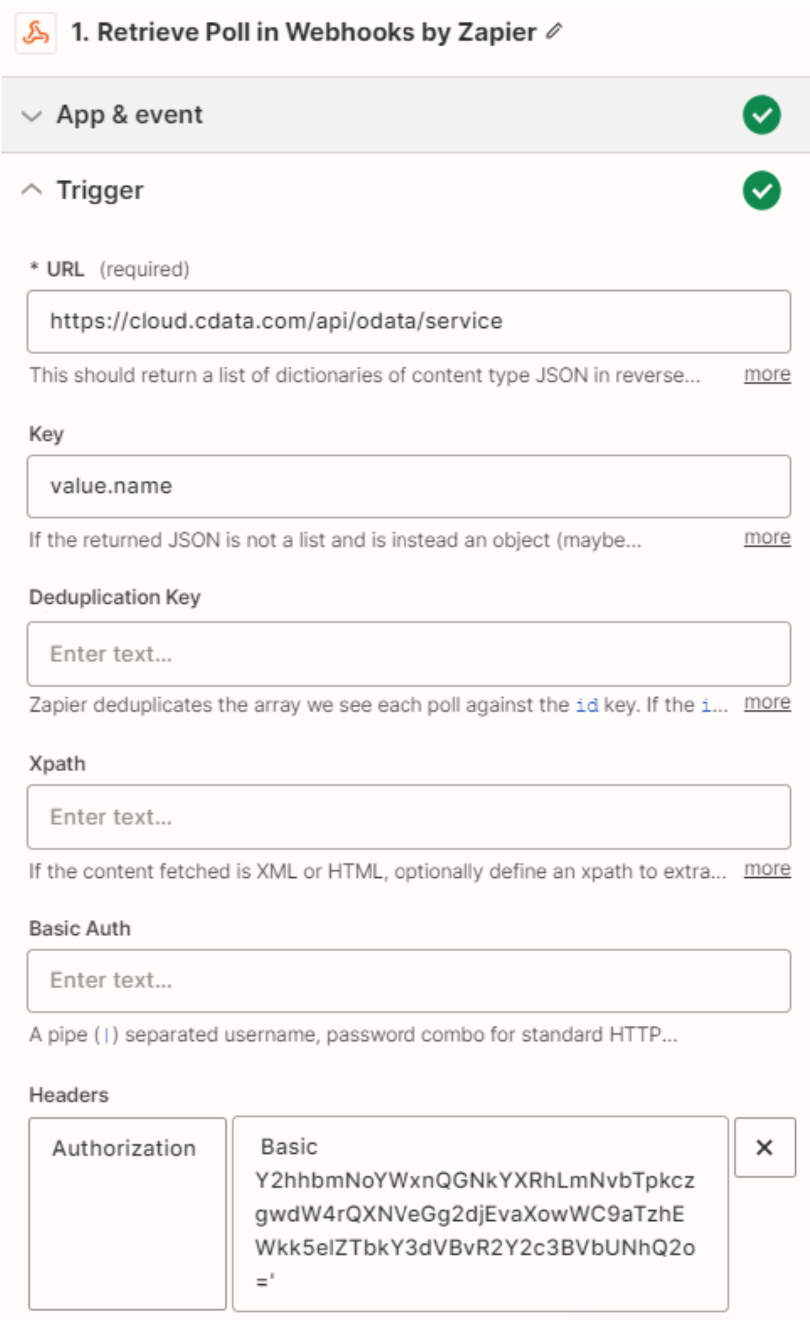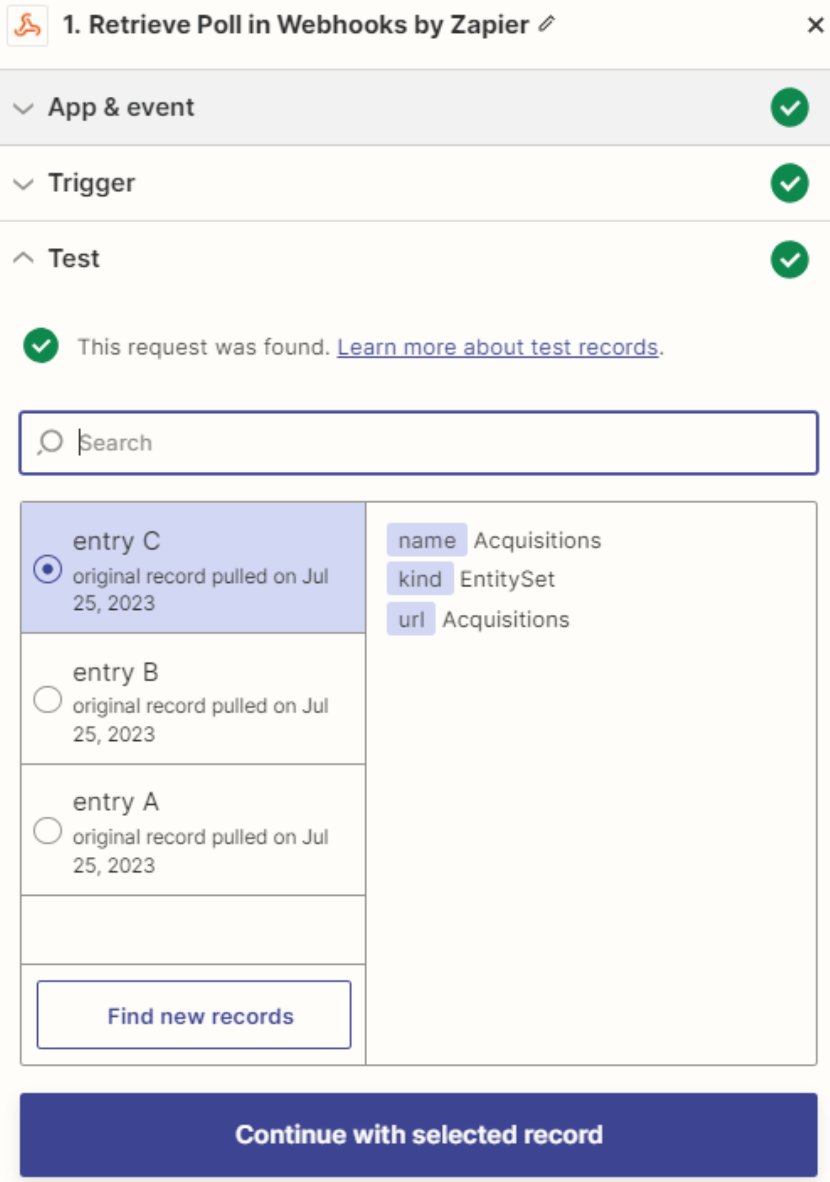Discover how a bimodal integration strategy can address the major data management challenges facing your organization today.
Get the Report →Build Automated Databricks-Connected Workflows in Zapier
Use CData Connect Cloud to connect to live Databricks data and build automated workflows in Zapier.
Zapier is an online automation tool that connects your apps and services. When paired with CData Connect Cloud, you get access to live Databricks data for your workflows. This article shows how to connect to Databricks and build workflows with live Databricks data in Zapier.
About Databricks Data Integration
Accessing and integrating live data from Databricks has never been easier with CData. Customers rely on CData connectivity to:
- Access all versions of Databricks from Runtime Versions 9.1 - 13.X to both the Pro and Classic Databricks SQL versions.
- Leave Databricks in their preferred environment thanks to compatibility with any hosting solution.
- Secure authenticate in a variety of ways, including personal access token, Azure Service Principal, and Azure AD.
- Upload data to Databricks using Databricks File System, Azure Blog Storage, and AWS S3 Storage.
While many customers are using CData's solutions to migrate data from different systems into their Databricks data lakehouse, several customers use our live connectivity solutions to federate connectivity between their databases and Databricks. These customers are using SQL Server Linked Servers or Polybase to get live access to Databricks from within their existing RDBMs.
Read more about common Databricks use-cases and how CData's solutions help solve data problems in our blog: What is Databricks Used For? 6 Use Cases.
Getting Started
Connect to Databricks from Zapier
To work with Databricks in Zapier, we need to connect to Databricks from Connect Cloud, provide user access to the connection, and create OData endpoints for the Databricks data.
(Optional) Add a New Connect Cloud User
As needed, create Users to connect to Databricks through Connect Cloud.
- Navigate to the Users page and click Invite Users
- Enter the new user's email address and click Send to invite the user
![Inviting a new user]()
- You can review and edit users from the Users page
![Connect Cloud users]()
Add a Personal Access Token
If you are connecting from a service, application, platform, or framework that does not support OAuth authentication, you can create a Personal Access Token (PAT) to use for authentication. Best practices would dictate that you create a separate PAT for each service, to maintain granularity of access.
- Click on your username at the top right of the Connect Cloud app and click User Profile.
- On the User Profile page, scroll down to the Personal Access Tokens section and click Create PAT.
- Give your PAT a name and click Create.
![Creating a new PAT]()
- The personal access token is only visible at creation, so be sure to copy it and store it securely for future use.
Connect to Databricks from Connect Cloud
CData Connect Cloud uses a straightforward, point-and-click interface to connect to data sources.
- Log into Connect Cloud, click Connections and click Add Connection
![Adding a Connection]()
- Select "Databricks" from the Add Connection panel
![Selecting a data source]()
-
Enter the necessary authentication properties to connect to Databricks.
To connect to a Databricks cluster, set the properties as described below.
Note: The needed values can be found in your Databricks instance by navigating to Clusters, and selecting the desired cluster, and selecting the JDBC/ODBC tab under Advanced Options.
- Server: Set to the Server Hostname of your Databricks cluster.
- HTTPPath: Set to the HTTP Path of your Databricks cluster.
- Token: Set to your personal access token (this value can be obtained by navigating to the User Settings page of your Databricks instance and selecting the Access Tokens tab).
![Configuring a connection (Salesforce is shown)]()
- Click Create & Test
- Navigate to the Permissions tab in the Add Databricks Connection page and update the User-based permissions.
![Updating permissions]()
Configure Databricks Endpoints for Zapier
After connecting to Databricks, create a workspace and virtual dataset for your desired table(s).
- Navigate to the Virtual Datasets page and click Add to create a new Workspace (or select an existing workspace).
![The Virtual Datasets page.]()
![Adding a new Workspace.]()
- Click Add to add new assets to the Workspace.
- Select the Databricks connection (e.g. Databricks1) and click Next.
![Selecting an Asset.]()
- Select the table(s) you wish to work with and click Confirm.
![Selecting Tables.]()
- Make note of the OData Service URL for your workspace, e.g. https://cloud.cdata.com/api/odata/{workspace_name}
With the connection and Workspace configured, you are ready to connect to Databricks data from Zapier.
Connect to Databricks Data in Zapier Workflows
To establish a connection from Zapier to CData Connect Cloud using the OData protocol, follow these steps.
- Log into Zapier.
- Click Create Zap.
- In the dialog that appears, search for "Webhooks by Zapier", and click the option underneath.
![Creating a Webhooks by Zapier Zap.]()
- Under Event, select Retrieve Poll.
![Creating a Retrieve Poll event.]()
- Fill in the connection details:
- URL: Enter the OData URL (e.g. https://cloud.cdata.com/api/odata/{workspace_name}).
- Key: Enter "value.name."
- Authentication details: Fill in the Basic Auth or Headers. The basic option requires a user (your Connect Cloud username, e.g. [email protected]) and password (the PAT you've previously created) separated by a pipe symbol: |. The headers option requires a request type header with encoded credentials.
![Configuring the connection to Connect Cloud OData or Workspace URLs.]()
- Click Test. If the connection is set up properly, sample records will appear.
![Testing the connection.]()
Simplified Access to Databricks Data from Cloud Applications
At this point, you have a direct, cloud-to-cloud connection to live Databricks data from Zapier. For more information on gaining simplified access to data from more than 100 SaaS, Big Data, and NoSQL sources in cloud applications like Zapier, refer to our Connect Cloud page.












